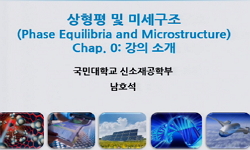The ODSCC detected in the TSP position of Ulchin 3&4 SGs are typical ODSCC of Alloy 600MA tubes. The causative chemical environment is formed by concentration of impurities inside the occluded region formed by the tube surface, egg crate strips, and s...
http://chineseinput.net/에서 pinyin(병음)방식으로 중국어를 변환할 수 있습니다.
변환된 중국어를 복사하여 사용하시면 됩니다.
- 中文 을 입력하시려면 zhongwen을 입력하시고 space를누르시면됩니다.
- 北京 을 입력하시려면 beijing을 입력하시고 space를 누르시면 됩니다.
https://www.riss.kr/link?id=A102075851
- 저자
- 발행기관
- 학술지명
- 권호사항
-
발행연도
2013
-
작성언어
English
-
주제어
SG ; Tube ; ODSCC ; Microstructure ; Residual Stress ; Sludge ; Alloy 600(HT)MA
-
등재정보
SCIE,SCOPUS,KCI등재
-
자료형태
학술저널
- 발행기관 URL
-
수록면
513-522(10쪽)
- DOI식별코드
- 제공처
-
0
상세조회 -
0
다운로드
부가정보
다국어 초록 (Multilingual Abstract)

The ODSCC detected in the TSP position of Ulchin 3&4 SGs are typical ODSCC of Alloy 600MA tubes. The causative chemical environment is formed by concentration of impurities inside the occluded region formed by the tube surface, egg crate strips, and sludge deposit there. Most cracks are detected at or near the line contacts between the tube surface and the egg crate strips. The region of dense crack population, as defined as between $4^{th}$ and $9^{th}$ TSPs, and near the center of hot leg hemisphere plane, coincided well with the region of preferential sludge deposition as defined by thermal hydraulics calculation using SGAP computer code. The cracks developed homogeneously in a wide range of SGs, so that the number of cracks detected each outage increased very rapidly since the first detection in the $8^{th}$ refueling outage. The root cause assessment focused on investigation of the difference in microstructure and manufacturing residual stress in order to reveal the cause of different susceptibilities to ODSCC among identical six units. The manufacturing residual stress as measured by XRD on OD surface and by split tube method indicated that the high residual stress of Alloy 600MA tube played a critical role in developing ODSCC. The level of residual stress showed substantial variations among the six units depending on details of straightening and OD grinding processes. Youngwang 3&4 tubes are less susceptible to ODSCC than U3 and U4 tubes because semi-continuous coarse chromium carbides are formed along the grain boundary of Y3&4 tubes, while there are finer less continuous chromium carbides in U3 and U4. The different carbide morphology is caused by the difference in cooling rate after mill anneal. There is a possibility that high chromium content in the Y3&4 tubes, still within the allowable range of Alloy 600, has made some contribution to the improved resistance to ODSCC. It is anticipated that ODSCC in Y5&6 SGs will be retarded more considerably than U3 SGs since the manufacturing residual stress in Y5&6 tubes is substantially lower than in U3 tubes, while the microstructure is similar with each other.
동일학술지(권/호) 다른 논문
-
DESIGN AND FABRICATION OF THE BEAM POSITION MONITOR FOR THE PEFP LINAC
- Korean Nuclear Society
- Kwon, Hyeok-Jung
- 2013
- SCIE,SCOPUS,KCI등재
-
SCATTERING CORRECTION FOR IMAGE RECONSTRUCTION IN FLASH RADIOGRAPHY
- Korean Nuclear Society
- Cao, Liangzhi
- 2013
- SCIE,SCOPUS,KCI등재
-
FACTORS OF GROUNDWATER FLUCTUATION IN SHIN KORI NUCLEAR POWER PLANTS IN KOREA
- Korean Nuclear Society
- Hyun, Seung Gyu
- 2013
- SCIE,SCOPUS,KCI등재
-
LOCAL COLLISION SIMULATION OF AN SC WALL USING ENERGY ABSORBING STEEL
- Korean Nuclear Society
- Chung, Chul-Hun
- 2013
- SCIE,SCOPUS,KCI등재







 ScienceON
ScienceON






